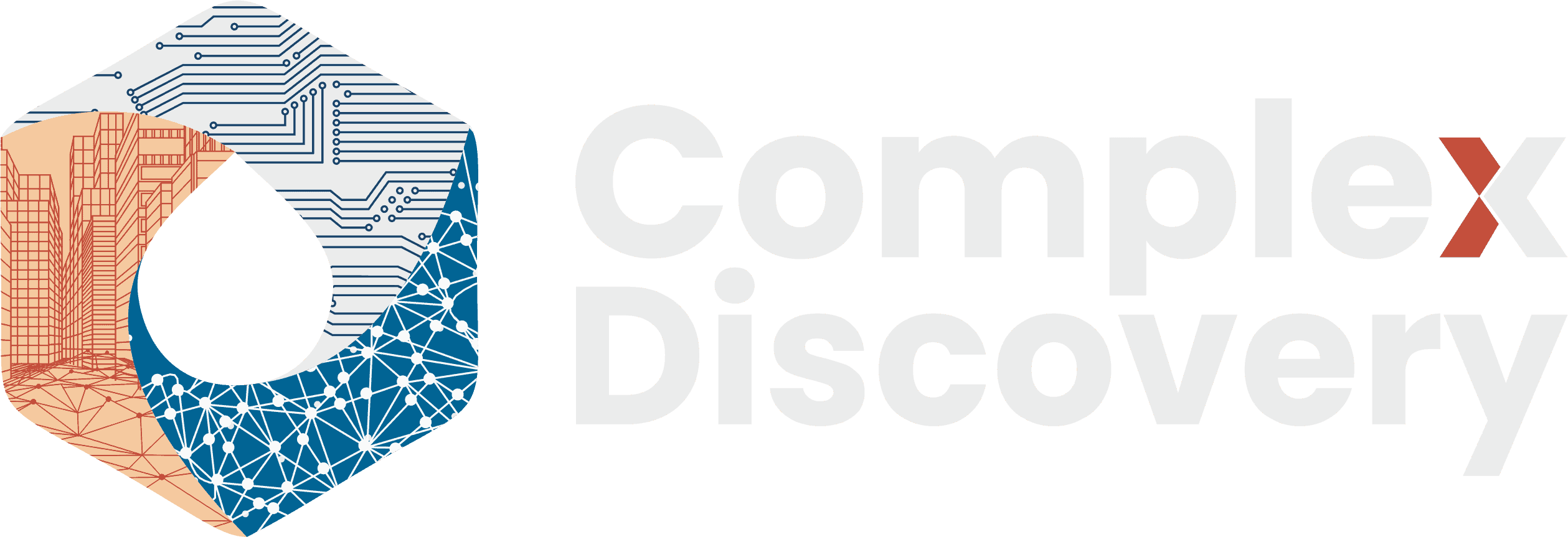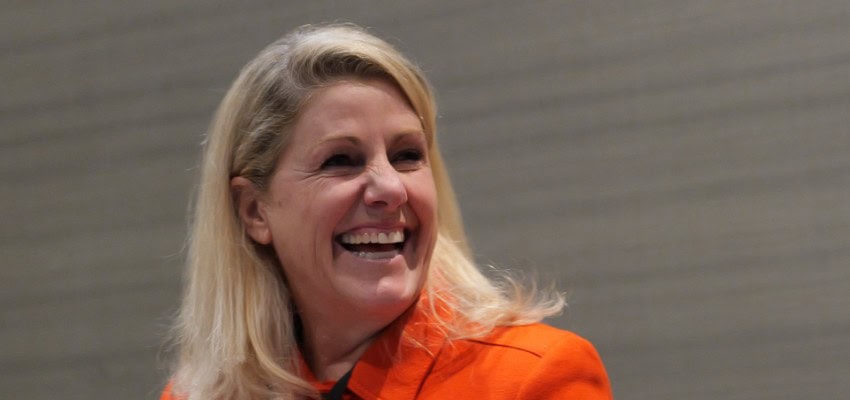Editor’s Note: This article draws from a revealing panel discussion at the TLTF Summit, moderated by Shanin Lott of Russell Reynolds Associates, featuring three distinct approaches to AI’s impact on law firm economics: Keith Maziarek of Katten Muchin Rosenman on the persistent challenge of value-based pricing; LeeAnn Black of Latham & Watkins on their $20 million AI investment and talent transformation; and Michael Pierson of Pierson Ferdinand on their radical AI-native model that eliminates junior associates entirely.
What emerged was not just another technology discussion, but a frank examination of how AI is forcing fundamental questions about legal value creation, talent models, and client relationships. For cybersecurity, information governance, and eDiscovery professionals serving law firms, the panelists’ insights reveal both the scale of transformation underway and the critical role these specialists will play in bridging the gap between technological capability and economic reality.
As Black notably observed, even industry leaders are “making a bet” on what the future requires—a refreshing acknowledgment of uncertainty less than three years into the AI revolution.
Content Assessment: The AI Effect on Law Firms: From Time-Based to Value-Based Services – TLTF Summit Deep Dive
Information - 94%
Insight - 95%
Relevance - 95%
Objectivity - 93%
Authority - 95%
94%
Excellent
A short percentage-based assessment of the qualitative benefit expressed as a percentage of positive reception of the recent article from ComplexDiscovery OÜ titled, "The AI Effect on Law Firms: From Time-Based to Value-Based Services – TLTF Summit Deep Dive."
Industry News – Artificial Intelligence Beat
The AI Effect on Law Firms: From Time-Based to Value-Based Services – TLTF Summit Deep Dive
ComplexDiscovery Staff
The packed halls of the TLTF Summit witnessed more than just another discussion about artificial intelligence in law—they witnessed a salient moment in which industry leaders are actively reshaping the fundamental economics of legal practice. In a revealing panel moderated by Shanin Lott of Russell Reynolds Associates, three distinct perspectives emerged on how AI is forcing law firms to reconsider not just their technology stack, but their entire approach to value creation, talent management, and client relationships.
The Value Paradox: Moving Beyond Production Time
Keith Maziarek, Director of Pricing and Legal Project Management at Katten Muchin Rosenman LLP, crystallized the industry’s central challenge during the panel discussion. “I think historically we focus a lot more on the what’s, what’s done and not the outcomes,” he explained. For twenty years, clients have insisted they “buy results, not hours,” yet the billable hour remains stubbornly entrenched. Maziarek noted that while articles in 2009 predicted 90% of legal work would shift to fixed fees by 2012, the reality today shows perhaps 10-20% has made that transition, varying by firm and type of work.
The AI revolution, Maziarek argues, parallels the earlier pricing revolution in its fundamental challenge of separating production time from value. “How they’re delivered is sort of irrelevant,” he stated, emphasizing the need to identify what generates value and how that overlaps with services being delivered. He advocates examining both qualitative and quantitative drivers of value, whether they represent economic value, business continuity, cost savings, or risk avoidance.
This shift presents profound implications for cybersecurity and information governance professionals. As firms move toward value-based pricing, the ability to quantify risk mitigation, demonstrate compliance effectiveness, and articulate the business impact of data protection becomes crucial. The traditional model of billing for document review hours gives way to pricing based on the strategic value of information security and regulatory compliance.
The Twenty Million Dollar Question: Infrastructure Investment and ROI
LeeAnn Black, COO of Latham & Watkins, revealed the scale of commitment required when she disclosed that her firm has invested $20 million in AI products while hiring approximately 40 new professionals in the last 12 to 18 months. These hires include AI experts, machine learning engineers, data scientists, and what the firm calls “innovation lawyers”—many of whom were former Latham attorneys who ventured into the tech space before returning.
“Their role is to work side by side with our lawyers to look at workflow and to figure out where we can find use cases that are valuable to us, where we will get a return on investment,” Black explained. She noted that sometimes their analysis reveals that improvements don’t require AI at all, just changes in workflow.
Black stressed the importance of rapid experimentation, stating, “You have to fail fast because otherwise you have way too many products. It’s very confusing to our people.” The firm has built its own version of ChatGPT with curated firm data and conducted extensive training initiatives. Just the week before the Summit, 500 attorneys participated in AI training that covered experiential learning, ethics, responsibility, and included client perspectives on risk management from companies like Meta.
For eDiscovery professionals, this represents a fundamental shift. Black shared a compelling example of an associate on trial who dropped transcripts in real-time into AI to assess whether arguments were persuasive and what could be done differently. “I get lots of examples like that where the quality and just additional insight into what they’re working on is creating, I don’t want to say more time, but it’s different time,” she observed.
The Radical Alternative: Pierson Ferdinand’s AI-Native Model
Michael Pierson presented the most disruptive vision through Pierson Ferdinand, which he described as debuting in January 2024 as “the largest law firm launch in US history with 130 partners, all of whom practiced together previously.” The firm has since doubled its partner headcount to over 270 partners globally across 35 locations with more than 90 practice areas, crossing the nine-figure revenue threshold in its first 18 months.
The firm operates as an entirely remote, distributed model. “We do not have junior lawyers at the firm,” Pierson stated definitively. “We have decided that it is better for us to use generative AI than to bring on junior staff at the firm.” The most junior professionals at the firm are in their fifth year of practice, with some becoming junior partners in their eighth year.
Pierson explained that partners control their own rates and billable hours within a system driven by a compensation algorithm that incentivizes collaboration. “Everyone understands that if you’re the originator of a matter, you get X. And if you are the working attorney, the producer, you get Y,” he said. This structure means partners are incentivized to share work rather than hoard it, with Pierson noting, “You’re actually saying, no, I have an ethical duty to make sure that the tax partner who actually has the expertise is working on this matter alongside me.”
When asked about performance management, Pierson revealed a radical approach: “We have no billable hour requirements. We think that it is antithetical to the client-attorney relationship.” The firm allows partners to set their own income targets, with some earning millions while others choose lower targets based on their preferences.
The Leverage Model Evolution: From Pyramids to Rectangles
Despite the disruption, traditional firms aren’t abandoning their talent pipelines. Black revealed that Latham & Watkins has actually increased first-year hiring for 2027 by approximately 5-10%. “We’re making a bet that in order to have the best fourth years and fifth years and sixth years, we need first years,” she explained. “They need to be trained. They need to understand our firm, how they work, how we work, what our culture is.”
Maziarek offered a different vision for the future structure of law firms. He described a shift from what he calls “an infantry unit” of interchangeable people to something “more like a basketball team” with specialized roles. Drawing on an image from Steven Poor, he described the evolution as moving from a pyramid to “a rectangle as opposed to a pyramid where you’ve got sort of that one-to-one leverage ratio as opposed to more leverage underneath you.”
This new model requires more targeted recruiting for specific personalities and skill sets that form cohesive teams. Maziarek emphasized that firms must work harder to keep these specialized teams together, noting that “you’re going to have to keep them engaged, keep them sharp, keep them developing up the ladder, and then retention, probably there’s money involved there.”
He sees this as a redeployment rather than an elimination of expenses. “You have to bring in data people, tech people, other tools, all the different types of engineers to help propel what would be this new business model to run optimally,” he explained.
The Transparency Imperative: Client Relationships in Flux
Perhaps the most critical theme throughout the discussion was transparency. Black emphasized that “the most important thing is to make sure there’s transparency and dialogue and discussion with your clients.” She speaks to clients daily about AI and has ensured partners know how to address the topic, providing them with more than an elevator pitch—comprehensive talking points about the firm’s investments.
The disconnect between client and firm expectations remains significant. Black noted that clients frequently ask, “Are you guys lowering your cost of goods sold, and is that going to come to us?” Her response involves explaining where the firm sees efficiencies and where it doesn’t, at least not yet. “My experience has been when you have those one-on-one conversations with clients, they understand because they’re using many of the products as well,” she said.
Maziarek pointed to a fundamental challenge in aligning expectations. “A lot of people’s expectations have skyrocketed past where we’re at from a maturity cycle standpoint right now,” he observed, referencing a Bill Gates quote. He emphasized the need for all parties to be “ideating, iterating on the best ways to make things work in different categories of work,” while maintaining patience as the industry develops common understanding.
Critical Implications for Legal Technology Professionals
The transformation presents distinct challenges and opportunities across legal technology disciplines. For cybersecurity professionals, AI-native models like Pierson Ferdinand’s distributed structure introduce complex jurisdictional security requirements. As firms build massive datasets to train proprietary AI systems, protecting these assets from manipulation becomes as critical as traditional network security, while new transparency obligations require demonstrating AI safety to increasingly concerned clients.
Information governance specialists face a fundamental shift from managing document volume to ensuring data quality for AI training. Black’s mention of curated firm data for Latham’s proprietary ChatGPT system highlights the critical importance of knowledge management in establishing frameworks for responsible AI use while creating transparent audit trails for regulatory and client requirements.
For eDiscovery professionals, the transformation is particularly acute. The traditional linear review process gives way to iterative, AI-enhanced discovery where real-time analytics during proceedings become possible. Black’s example of associates using AI during trial to assess argument effectiveness in real-time represents just the beginning of this evolution, requiring these professionals to become experts in verifying AI-generated findings and ensuring their defensibility.
The Path Forward: Economic Implications and Strategic Evolution
The economic implications of AI adoption are already visible. When asked about rising profits per partner despite AI implementation, panelists pointed to several factors. Black noted that leverage at her firm has actually increased over recent years, even with technology influx. She also credited market share growth and a greater emphasis on operational efficiency beyond just AI implementation. Maziarek suggested that some clients simply lack the robust legal operations or procurement functions to push back on rate increases, creating pockets of the market where traditional billing continues largely unchanged.
Maziarek’s observation about the industry’s maturity provides important context: “It’s been two and a half years now, almost three years since ChatGPT got released on the world,” yet the legal industry still struggles with fundamental questions about value and pricing. He advocates for understanding how different categories of work—commodity, core, and cream—are impacted differently by AI tools, and then communicating this understanding clearly to clients.
For cybersecurity, information governance, and eDiscovery professionals, this transformation demands evolution from technical specialists to strategic partners. As law firms navigate between traditional models and AI-native futures, these professionals become essential in ensuring that innovation doesn’t compromise security, compliance, or client trust. Their ability to quantify and articulate the value of risk mitigation, data protection, and information governance will prove crucial as firms shift from billing hours to pricing outcomes.
The future of legal services won’t be determined solely by who has the best AI, but by who can best integrate technology with human expertise while maintaining the trust and security that clients demand. As the panelists demonstrated through their diverse approaches—from Latham’s massive infrastructure investment to Pierson Ferdinand’s radical restructuring—that future is being written now through experimentation, transparency, and a willingness to challenge fundamental assumptions about how legal services create value.
News Sources
- Reporting by ComplexDiscovery Staff attending the session “The AI Effect on Law Firm Economics” at the TLTF Summit 2025 in Austin, Texas, November 12, 2025.
- TLTF Summit. (2025). 2025 TLTF Summit Lookbook. Austin, TX: TLTF Summit Organizing Committee.
- TLTF Summit
Assisted by GAI and LLM Technologies
Additional Reading
- Trifurcation, Transparency, and TLTF: How Zach Posner Framed the Future of Legal Services in 2025
- What Happens When Law Rewrites Itself? TLTF Summit 2025 May Offer a Glimpse
- Learning from Collective Failures: A Pre-Summit Reflection on AI Governance
- Tallinn Digital Summit 2025 to Focus on Secure AI Futures, Cyber Resilience, and Digital Transformation
- From Fungus to the Future: Reena SenGupta Challenges Legal Industry at ILTACON 2025 to Rethink Its RootsFrom Bates Stamps to Bots: ILTACON Roundtable Traces Legal Tech’s Leap from TAR to AI
Source: ComplexDiscovery OÜ












































